Never trust The Brownie Cookbook
Exploding pressure cookers, disappointing recipes and other stories of learning to cook.
This guest post is written by
who writes ‘Queen of Markets’. Cheryl will travel almost anywhere for a good food market. She writes food stories, food history, and pieces questioning what we eat, why we eat, and the food we deserve to eat. And she'll take you on journeys into food and farmers markets, often accompanied by food writers or knowledgeable locals.It’s a hard lesson to learn, being betrayed by something or someone you trust. Cookery books touch our whole lives, not just the kitchen or our stomachs.
Discovering that having confidence in what I considered a safe hands wasn't always warranted. Through the prism of The Brownie cook-book and continuing with Family Circle, I learnt about disappointments, rock cake by onerous rock cake. Finding out at an early age that some recipes just don't work. It was going to be a difficult and determined journey.
The Brownie cook-book was a Christmas present because of course, I was a Brownie. I’d made my oaths to Queen and Country, proudly wearing my uniform, polishing my leather belt and buckle, doing everything I could to earn and sow on my next badge.
I learnt the lesson that recipes aren't always to be trusted. How could The Brownie cook-book be anything but perfect? How could the Brownies be so wrong? My sister and I made biscuits from Family Circle, a 1960’s domestic magazine that I only remember for melting moments with fat half cherries on top, but the recipe worked.
Brownie cook-book recipe number one; The Easter Egg dilemma.
I was so excited when I read this. Home made chocolate eggs I could give as gifts to my family! What’s not to like. I set off to the sweet shop to buy a bar of Cadburys Dairy Milk. Once melted, 2oz of chocolate barely covers the base of an empty egg shell. I had to empty my piggy bank and set off down the road to the sweet shop again, this time to get a family size bar of dairy milk. I think the melted chocolate filled about half way up the empty egg shells. The recipe helpfully suggests popping home made peppermint creams between the chocolate layers, but that still wouldn’t fill the eggs unless the fondant creams were giant sized.
The idea of a solid chocolate egg sounds nice but in reality it was difficult to eat, let alone peel off the egg shell. I don’t think my parents were impressed and I was devastated. Lesson learnt.
Recipe two; The iced hedgehog
IT DOESN’T SQUIDGE! IT CRUMBLES.
The next recipe attempted; an iced hedgehog for a party, a swiss roll squished around ice-cream. It doesn’t work. Picture little hands, sticky from the jam in the swiss roll, crumbs everywhere, ice cream melting. The sponge is supposed to squish together. It refuses to do so. The ice-cream won’t mould itself easily around the squidged swiss roll. Failure two. I tried one more time, with a recipe winningly called ‘hurry up rolls’. What do you get if you rub fat into flour and add salt and milk? Dough, not bread.
Move on a few years to DS (domestic science) at school.
Our school was old enough to still have a mock up ‘flat’ in the DS rooms so that girls could practice their housekeeping skills before leaving school, getting married and obviously, becoming mothers. DS was on a similar level.
Miss Palfrey and the exploding pressure cooker
Miss Palfrey was our domestic science teacher. As skinny as a cinnamon stick, with hairy arms that were forever folded over her pink polyester overall, she had a way of talking, crisp as iceberg and to the point.
I challenged the status quo of the day; I made stir fried vegetables. She came over to examine them, taking a piece of carrot from my pot. I found myself apologising for the crispness of the vegetables as she responded; yes that's the problem with stir frying.
For the school fete she gave me the task of making Turkish delight. It didn’t set. To this day I still believe she blames me and not the recipe. I made chutney and the pressure cooker lid blew up and hit the ceiling. It wasn’t a good start for a food career.
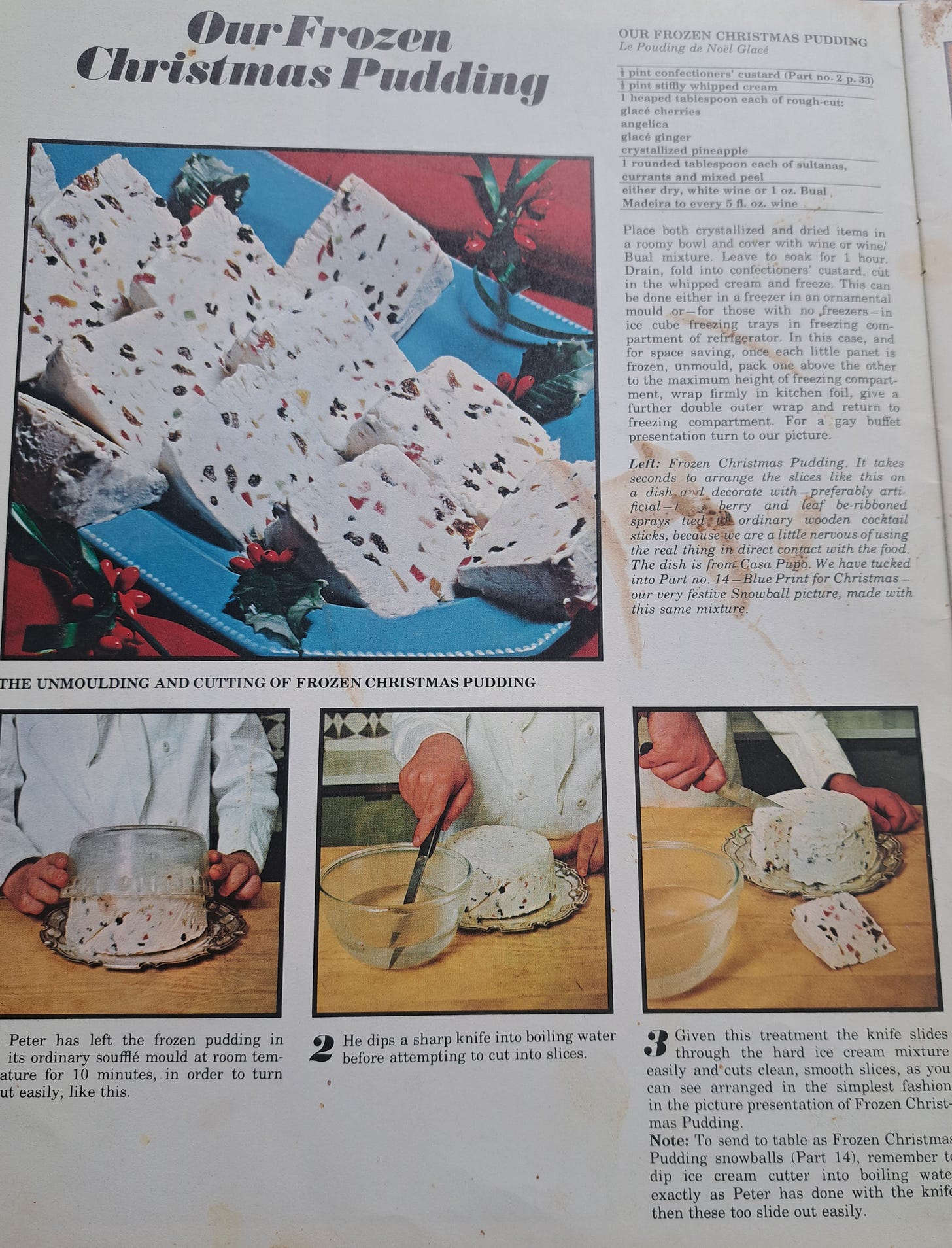
A friend of my mothers gifted Fanny Cradocks’ part cookery collection to me. I loved it. Much mocked she may be, but the recipes worked. One Christmas I made her iced Christmas pudding which won me praise from my grandmother. High praise indeed. If you read the recipe you can see how easy it is. A classic mix of custard and cream with glace fruit folded in, just like an Italian tutti frutti. Her ingredients and methods made sense. They worked. I’ve still got the collection.
Researching this piece I unearthed clippings and pull outs, brittle cuttings old as flint from newspapers, photo copies, hand written recipes and a mimeographed school recipe for Danish pastries using margarine because it was cheaper than butter.
At my grandparents house, I’d sit in the kitchen for hours, copying out recipes from Grandma’s Elizabeth Davids’ Italian Food. I don’t think I ever made it, but I loved the sound of apricot ice.
In the 1970’s supermarkets published their own cookery books; Sainsburys and Marks and Spencers led the way. I’ve still got a few in front of me now. The St Michael (M&S brand name) book of salads and snacks opens out onto a recipe for leeks a la nicoise with an illustration of obviously uncooked fat leeks covered with a tomato sauce. The ingredients specified young leeks but didn’t say what that meant. The 10 minutes cooking time did nothing to penetrate the tough leaves of the vegetables and they were still raw. Ah, the next page, bean sprout salad, a page spattered with stains. We must have been able to get beansprouts in the 70’s and we liked it because of the sweet and sour dressing. We were a salad obsessed family at a time when salad meant a bit of lettuce, cucumber and tomato with salad cream. The M&S book included recipes using peaches and apricots, Greek Salad, Russian Salad, Salade Nicoise. And in the ‘snacks’ section, years before I found Cranks, a recipe for Pan Haggerty. The recipe I cooked the most, and think about even today are the stuffed baked potatoes.
I’m missing out a much loved corner of cook book history; the pamphlets put out by food brands. We grew up using the Carnation cook books; our favourite desserts were in these little booklets. Many people still have the Be-Ro baking books and swear by them. Be-Ro say that they’ve sold over 38 million copies. The cooking fat Trex put out a dinky little book that was much loved by us.
I wanted to cook curries but didn’t have a clue how to start; we had curry powder at home but no other spices. I bought a few but without a recipe I was cooking in the dark and got equally dark looks from my mother who wasn’t impressed with my improvisation. What was wrong with curry powder, and banana, coconut flakes and sultanas on the side?
Going to college in Sunderland, I was gifted two books; Jocasta Innes Paupers cookbook, and Delia Smith’s complete collection.
Oh Jocasta, what a disappointment you were. We loved your decorating tips, ragged walls and extraordinary way with colour, but in the kitchen you were a let down.
Take her chicken liver pilaf. Chicken livers are cheap, rice is cheap, what could be a better student dish. The ingredients starts with 1lb of rice. We found it made a huge amount for 4 of us. To be fair, scrolling through the book now, I fail to remember anything else that we made. I raised my eyebrows at the comment that tinned guavas are cheap and make an excellent fruit fool. Tinned guavas were never cheap.
The North East was the land of cheese pasties and stotties. It’s where Greggs began. Peas pudding came in a block or was sliced into a stottie with ham. To my surprise, I found, through sharing cooking duties with flatmates that other people had different opinions about how to cook & we worked our way through Delia Smith who never let us down. I wish I could remember which recipe I followed to make a loaf of bread. I do know that it came in useful as a door stop for a few weeks. This was a different level of learning, meeting people from other backgrounds and cultures who cooked with varying levels of skills, and of course, all our ways were the right way.
Friends came round on Sunday afternoons. We'd had roast leg of lamb & Boulangère potatoes. They'd had beans on toast. We pooled our resources & shopped carefully in the market & local shops. It was a large house that had obviously at one time been divided into flats as there were several kitchens. We cooked in groups through the student year, and at Christmas all 12 of us came together to cook and share a collection of ramshackle tables & chairs in the largest room, squeezing together to share our turkey feast.
A few food highlights from the 1980’s.
Yes, there were some.
Jane Grigson wrote her guide to Food from Britain for The Observer newspaper. I’ve still got some of the pull outs. It was the first time that local food entered into the lexicon as something to be proud of, preserved and cherished.
Food magazine A la Carte was published. I subscribed to it; Looking back, an extraordinary contrast to the culture of the time when I was living in Sunderland, deep in coal strikes, with the biting wind of austerity and the North Sea. Once a month, it led me into another world, of rich food and richer people, journeys to new destinations, different ways of eating, extravagant recipes, and for the first time that I remember; beautiful food photography and new voices in food writing (hello Nigel Slater). Often I’d read it, wrapped up in layers of blankets on my bed because the gas fire wasn’t warm enough, a cheese and onion pasty keeping me company whilst I read about the glamorous parties and meals. A letter in one issue complained that not enough ordinary people were featured. The editor remarked; who wants to see what ordinary people eat. It was a magazine of its time; if it was clothing it would have huge padded shoulders and would probably be dripping in gold jewellery. I used the magazine a few years later when I was living in a house share in Archway, cooking the Christmas dinner. Christmas crackers made of filo pastry, stuffed with chestnuts and roast vegetables. I still have the menu somewhere; very tongue in cheek.
Books For Cooks was opened in 1983 by Heidi Lascelles. I went in during the holidays, cowed by the staff who seemed very fierce, until you bought a book or asked the right question. I bought Richard Olney, Simple French Food, Honey from A Weed, by Patience Gray and Joyce Molyneaux’s The Carved Angel cookbook. Heidi looked impressed. You must be a serious cook. I wasn’t, but I wanted to be. Richard Olney described rocket as ‘the most exciting green thing I know’. It wasn’t possible to buy rocket in London in 1983. The first time I had a garden, I grew it, and I found it growing wild. There was a time when rocket was a rarity.
On trips home to London, we went to Cranks for loaves of sunflower seed bread, carrot cake, cheese scones and Homity Pie, and to much missed Food for Thought in Covent Garden for stir fried vegetables on brown rice, served in beautiful little pottery bowls. I got the Cranks cookery book out of the library and photocopied the pages I wanted to keep. Wholemeal flour was everything. So was carob. The recipes were wholesome, obviously, but I never liked wholemeal pastry and I’m yet to be convinced that carob is a good substitute for chocolate. The only substitute for chocolate is more chocolate. Food for Thought lit the flame for my love of small grain brown rice; the little stubby kind that’s difficult to find now. It opened the door to learning how to cook rice. and training my flatmates that rice need not be a soggy tasteless heap of gruel.
After college, I stayed in Sunderland to run the local fringe theatre, doing all the programming, working with small theatre companies and trying to fill the seats for each performance. In the house where I lodged, an art student lived opposite me. She introduced me to tahini. In 1984. In the North East. Unheard of. Recipes from Cranks worked, so did those by Martha Rose Shulman; her instructions were lively and encouraging. I have no idea where I got hold of the ingredients, but we made tortillas from scratch. Mostly, I learnt from my artist neighbour, or bought from the market and learnt to make it up as I went along. I didn’t cook from all the books I bought; I read them like novels and took in the stories and recipes like portraits in a gallery, to be admired but not copied. How many of the books we collect, read and cook from can be considered classics that never date?
I’m leaving this piece in the mid 1980’s with three books. Jeremy Rounds’ The Independent Cook (Strategies for seasonal cooking). Jeremy’s articles for The Independent, A month in the kitchen, attempted to draw readers back to seasonal eating. In 1986 I found a copy of The Meze Cookbook in one of those strange remaindered book shops where books seem to go before they die. It’s never been out of my kitchen. Around the same time, working at Heals one Christmas, getting staff discount, I bought Claudia Roden’s Middle Eastern food, I fell for her stories and prose and began to cook from it. Confidence and time = ability to cook but not always to know when something won’t work.
At school we were given an exercise to do in our drama lesson. It involved reading a sheet of instructions. At the top the first line said;
Read these instructions all the way through to the bottom. If you did so, the very last line said; ignore instructions 2-19 and sit down. If you did that, you could sit and be amused by everyone else following instructions 2-19 and doing stupid things. Reading recipes is a bit like that. Read through to the end. Make sure all ingredients/cooking implements are to be found. Follow instructions. Unless, of course, you know better.

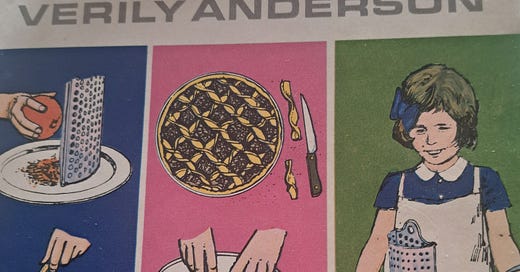




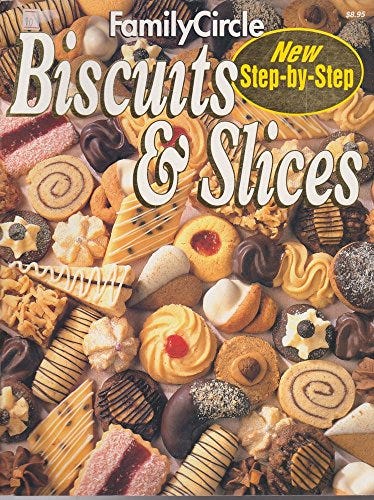
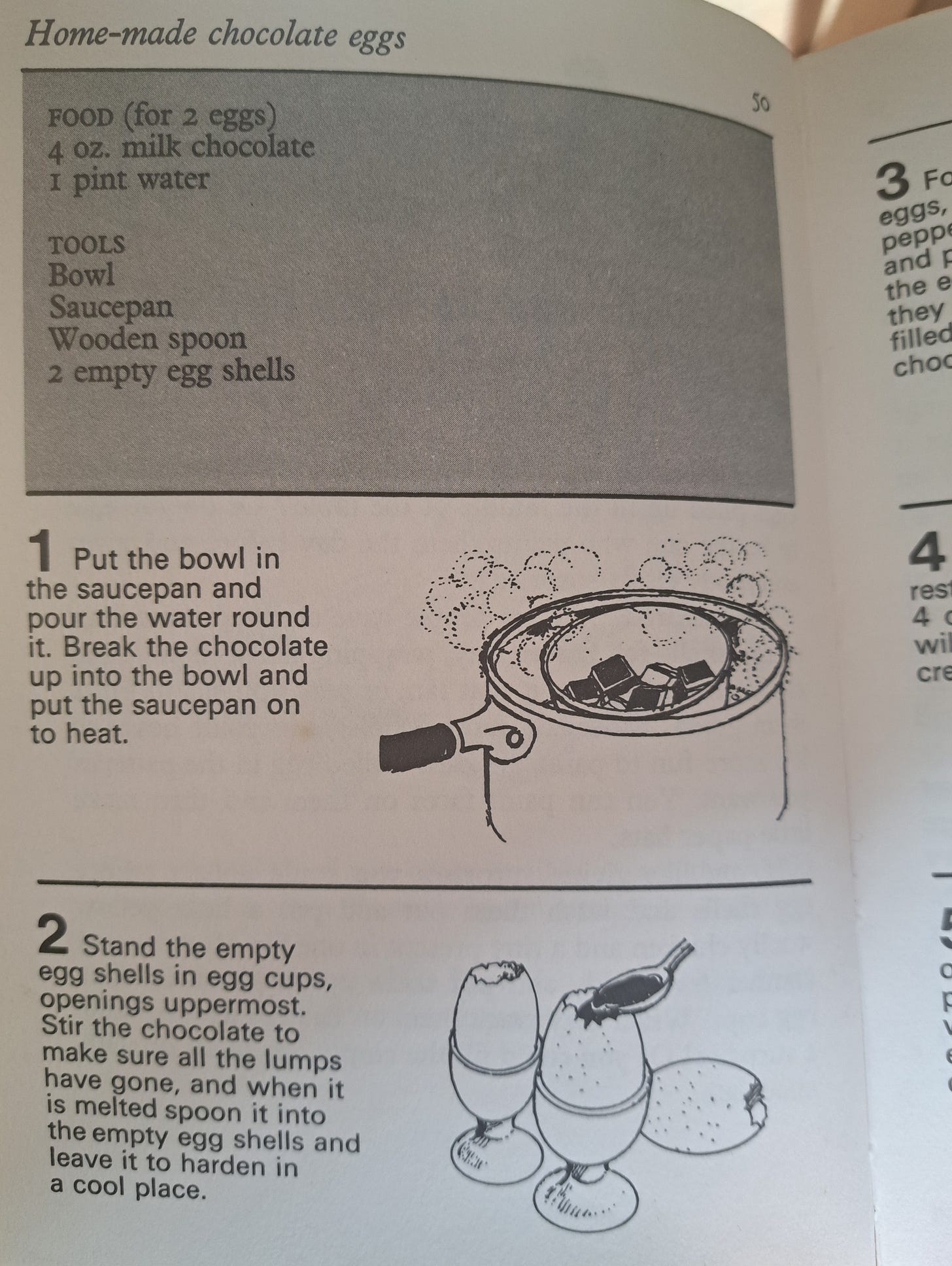
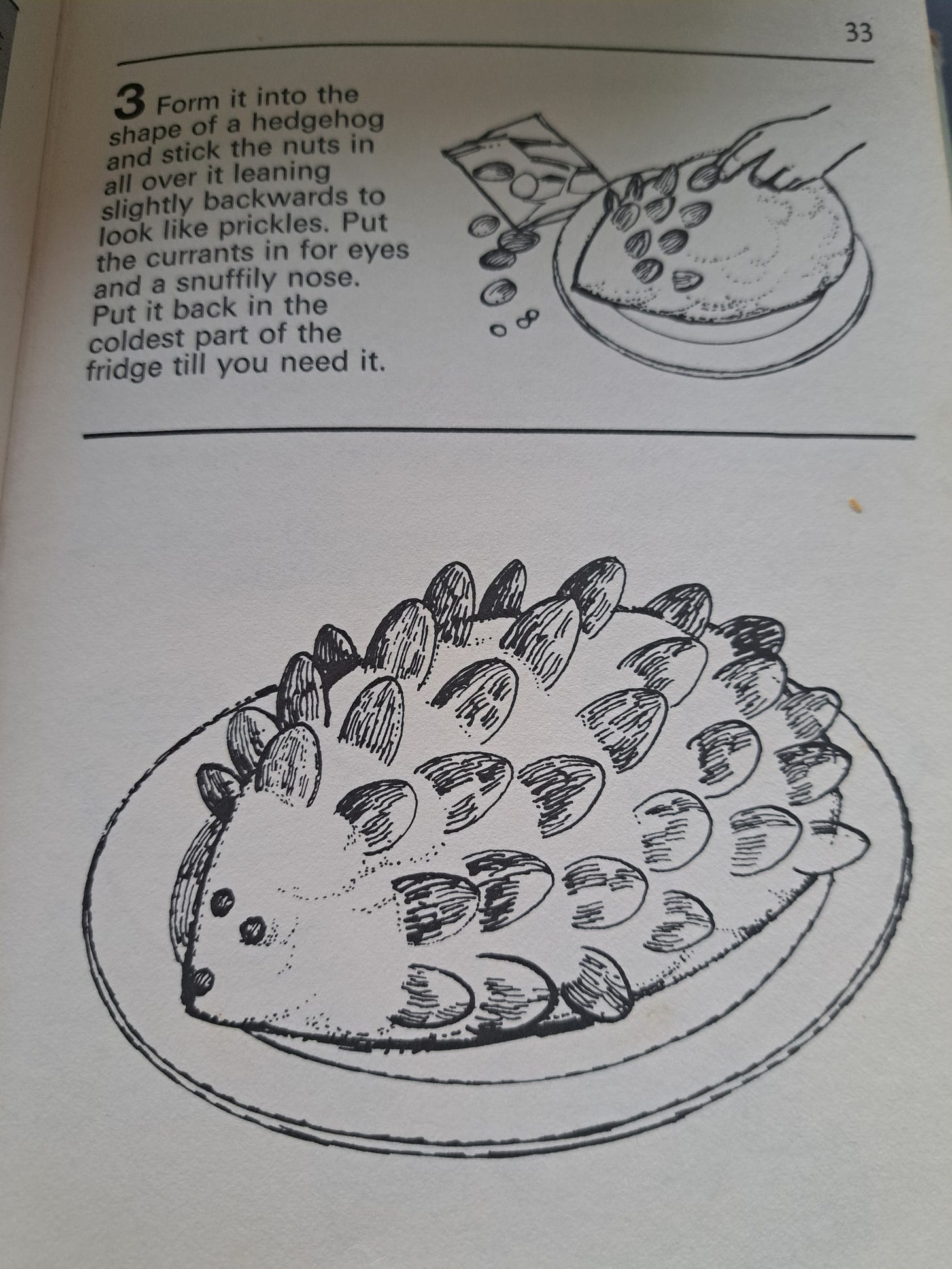
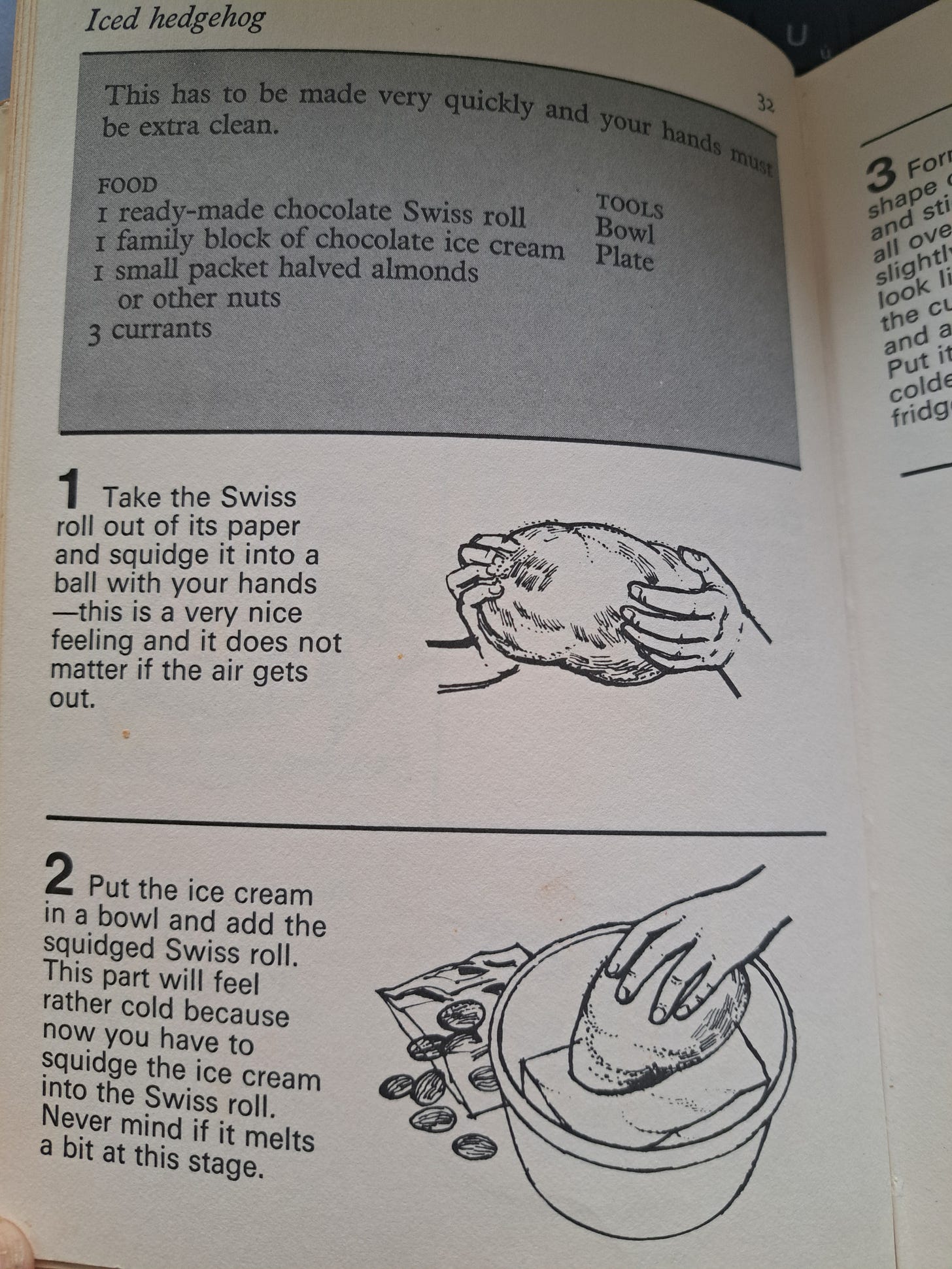
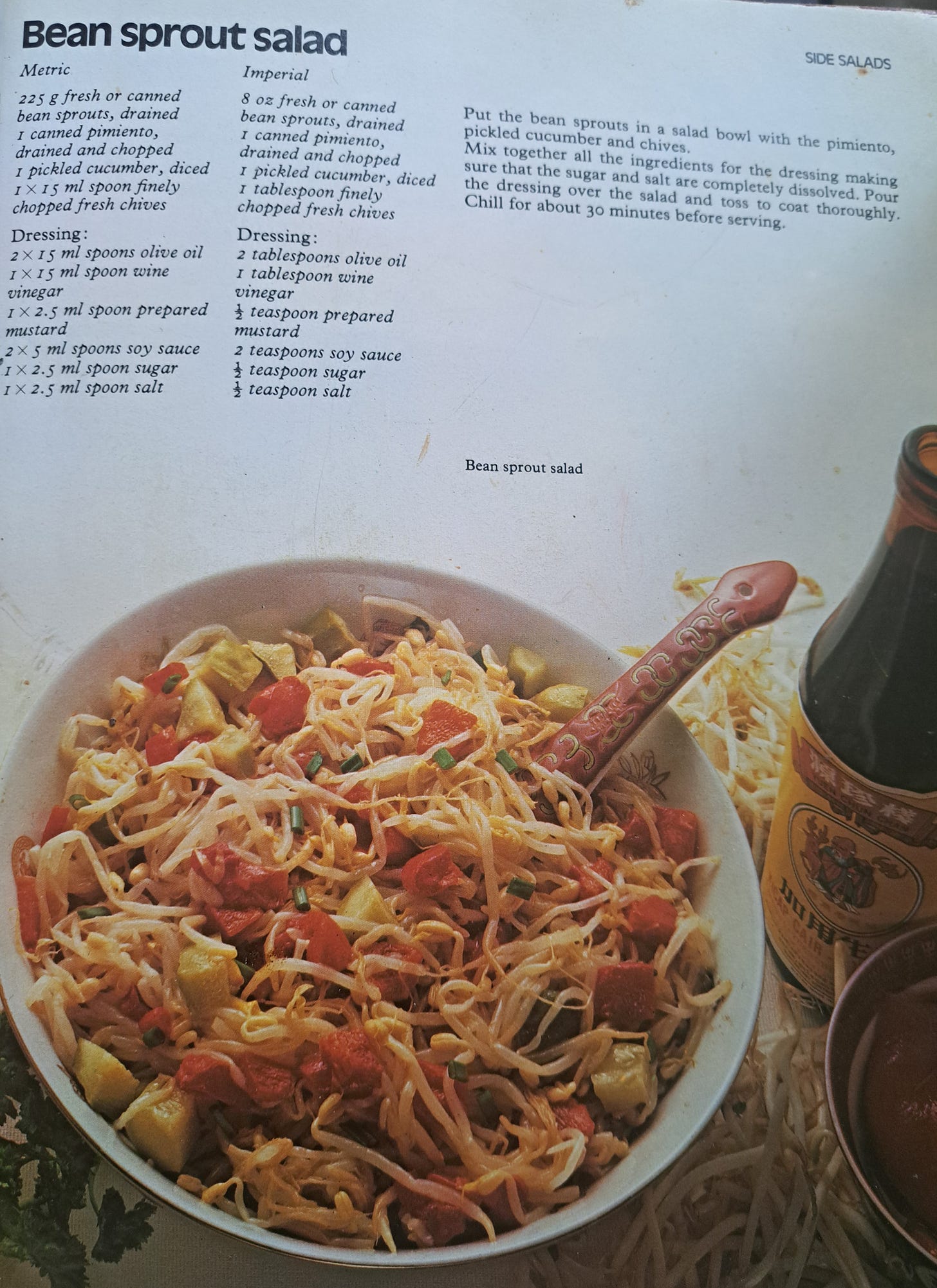

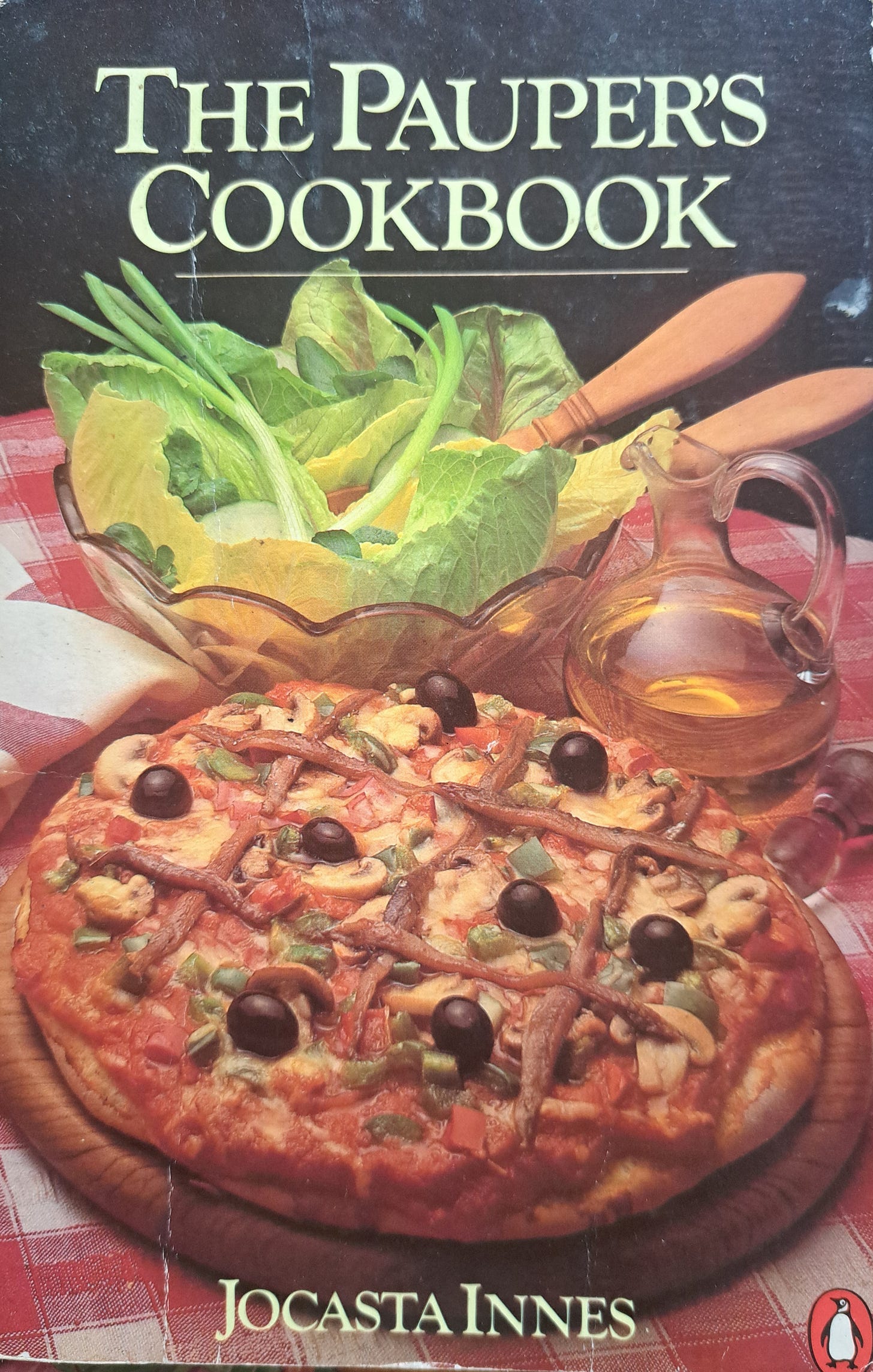
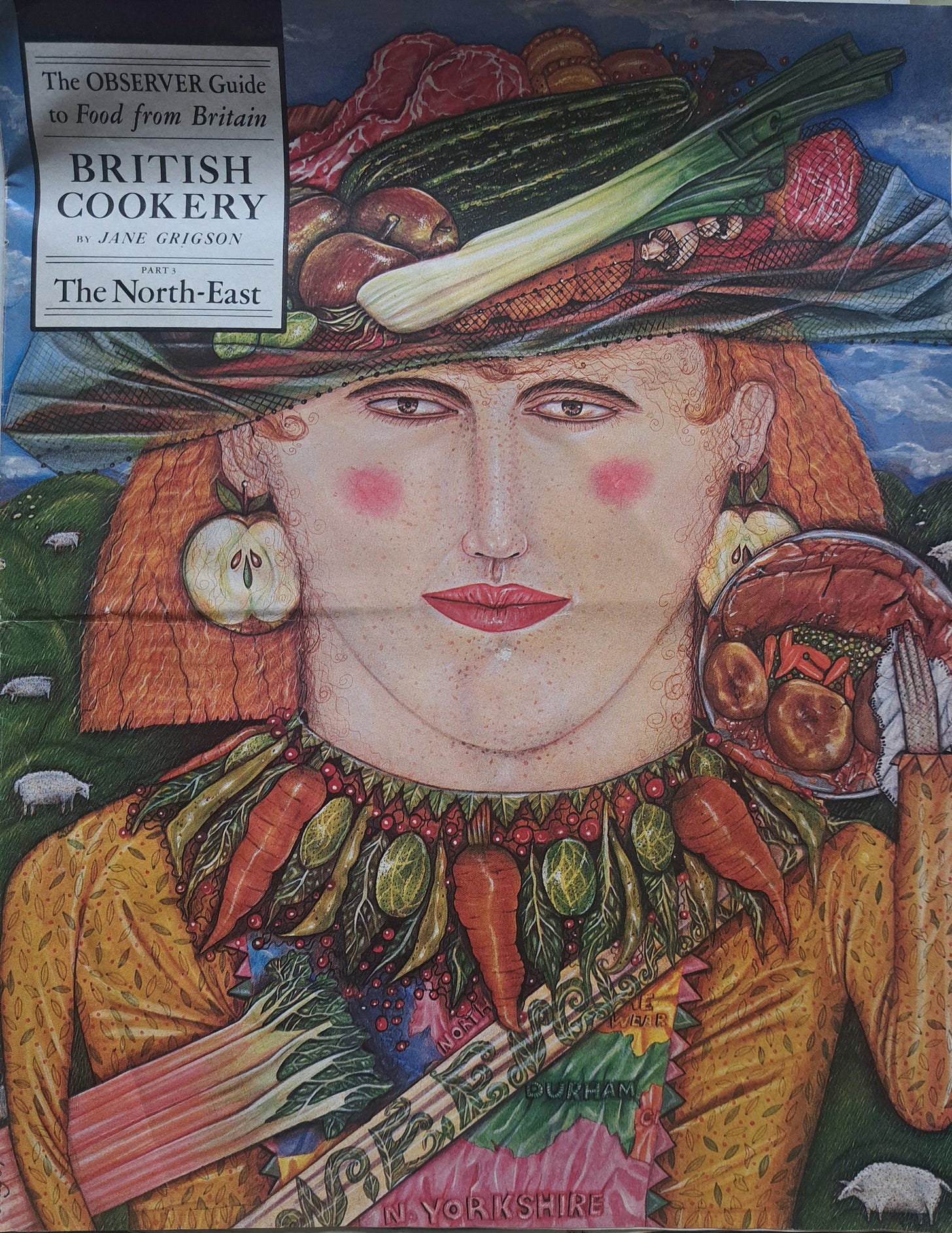
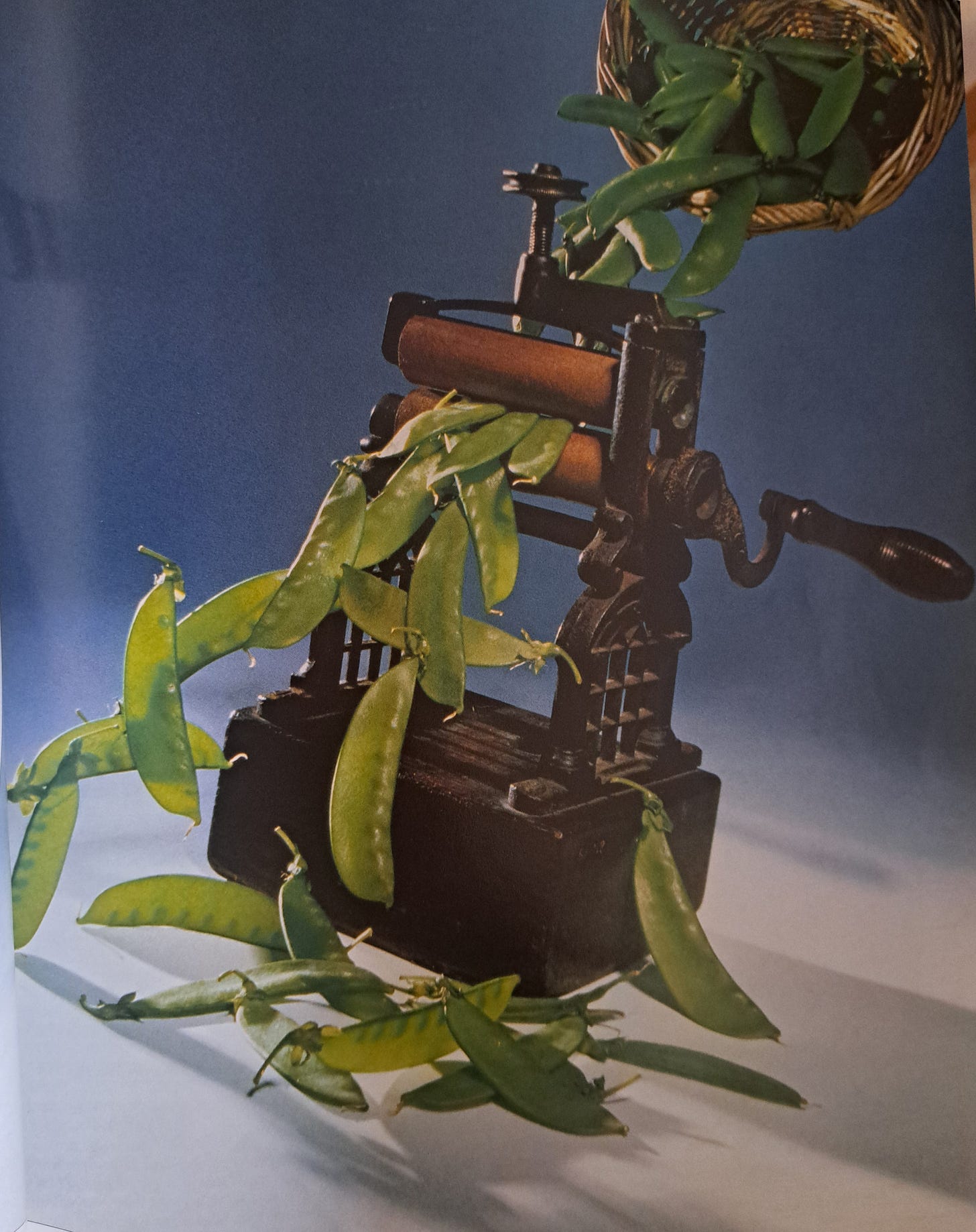
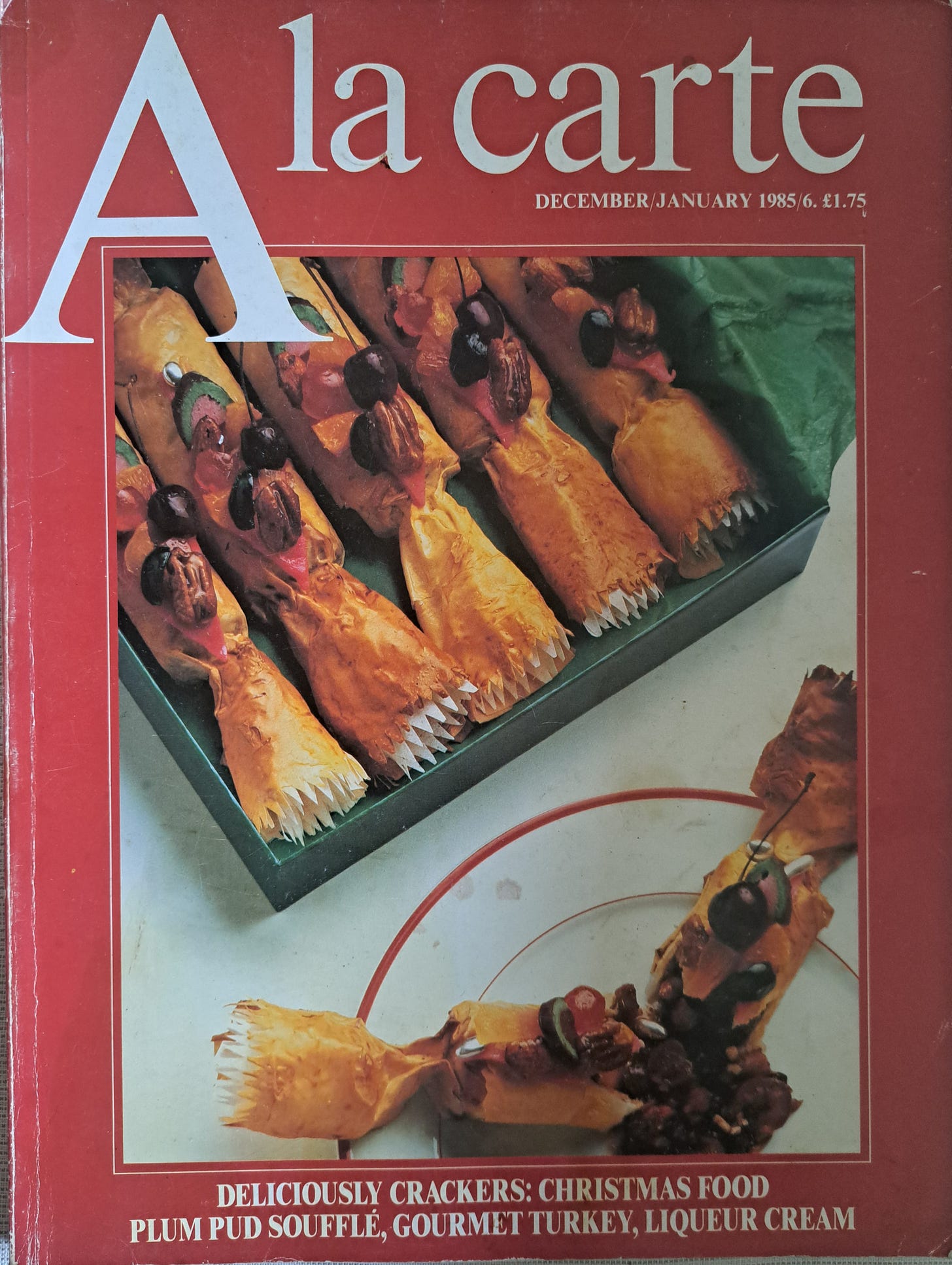
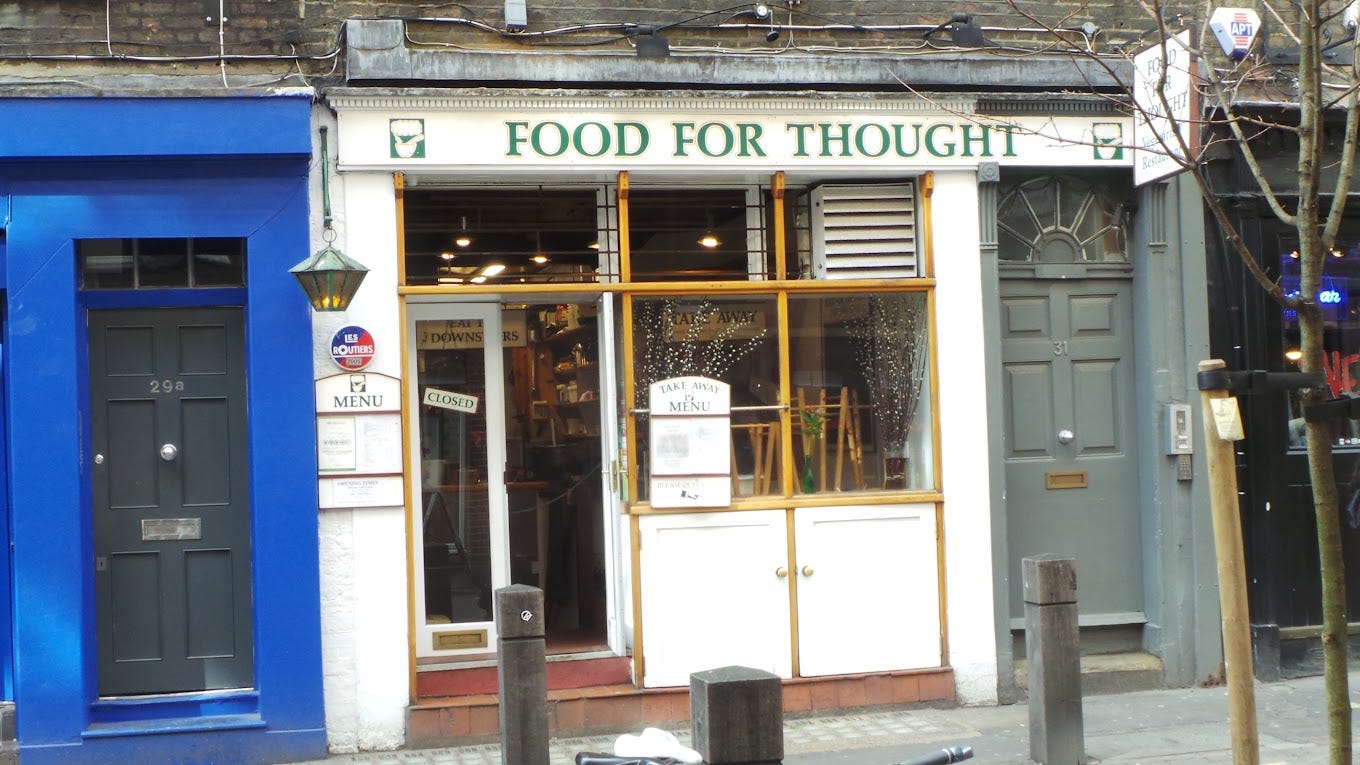
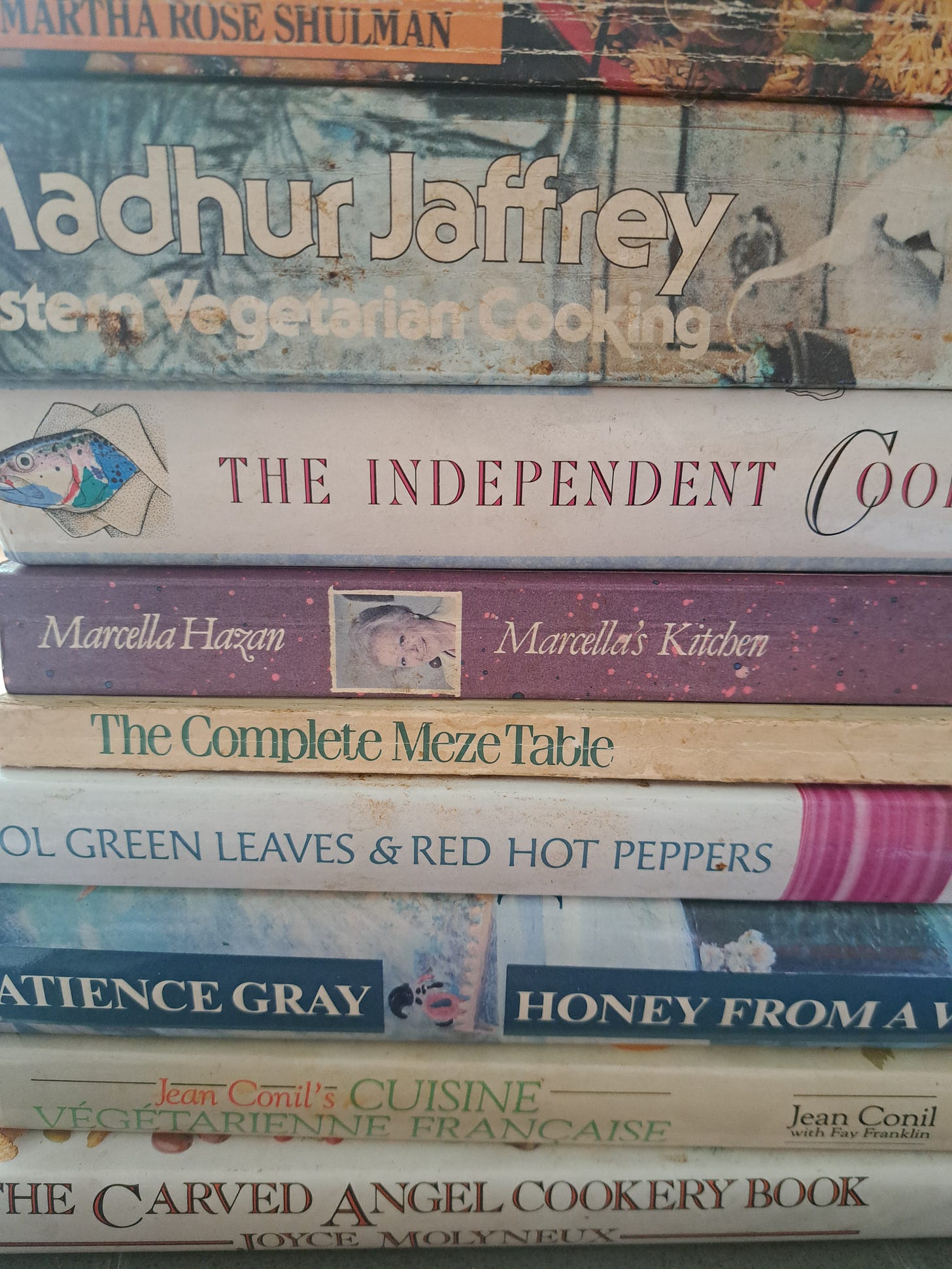
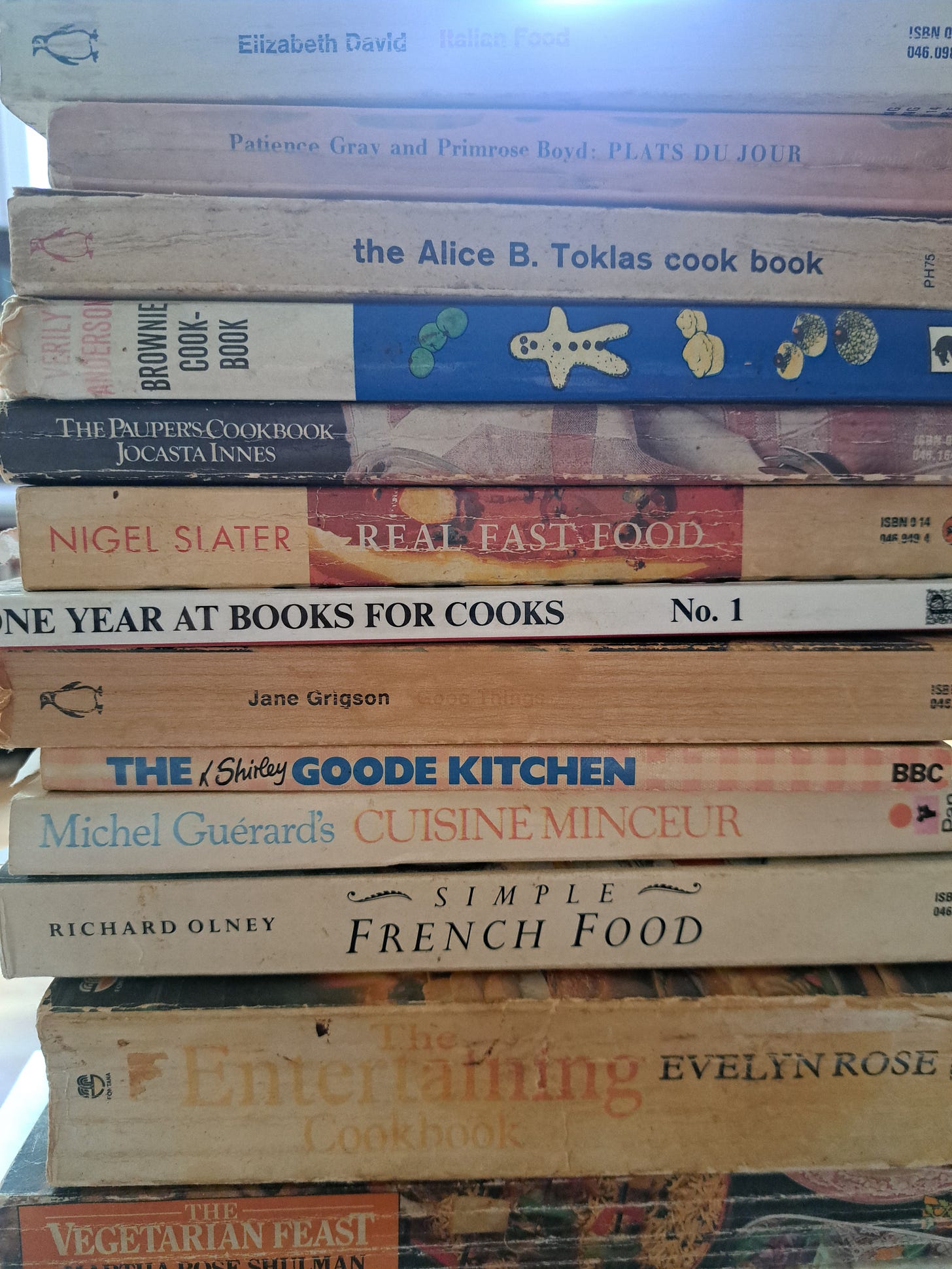
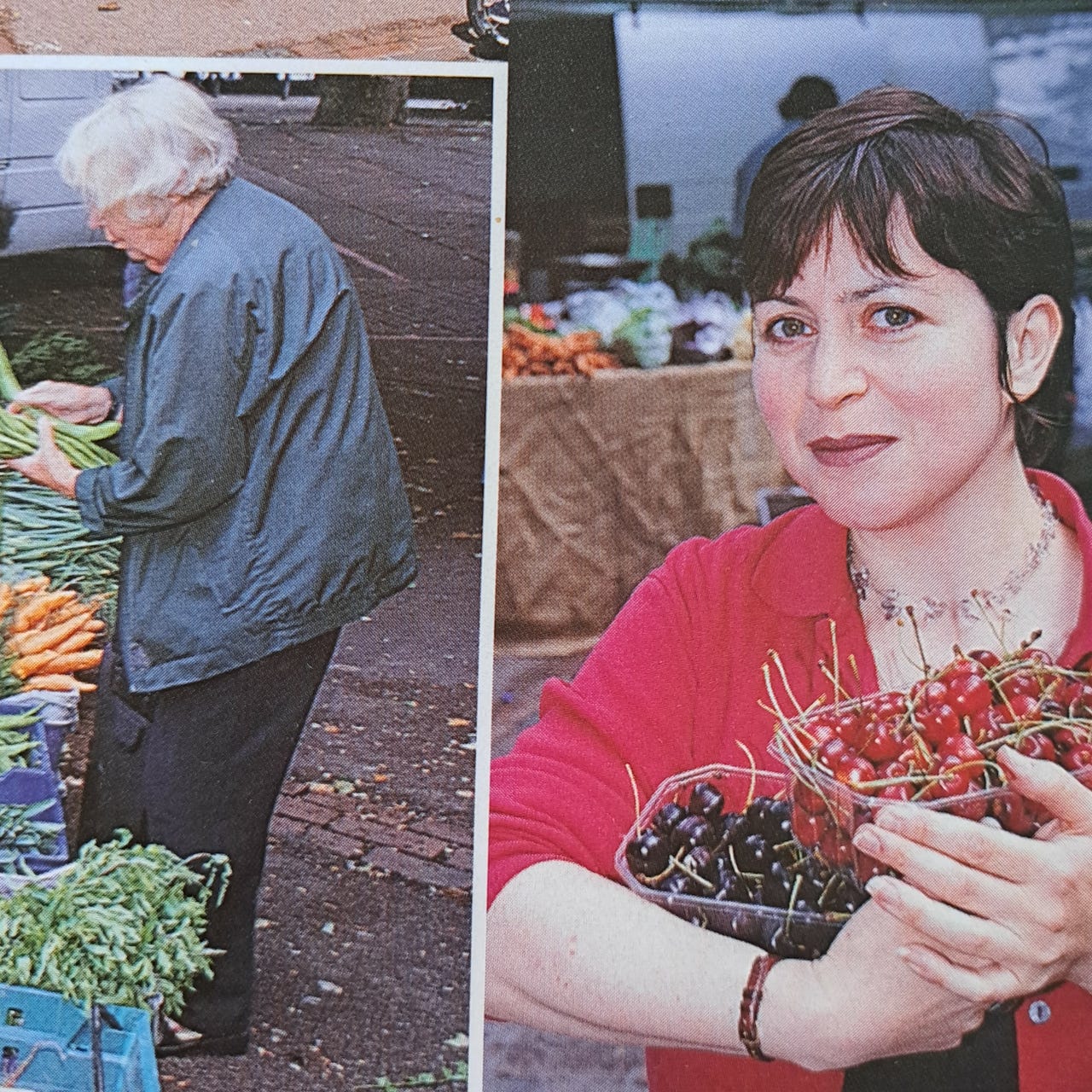
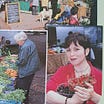
What a delightful read!
So many memories of the cookery books on my mum’s shelves and of buying lunch at Food for Thought! I still have a 1974 family circle magazine with the recipes for several of her weekend teatime standards. The other recipes sound absolutely hideous but it’s a historical document now. I never visited Books for Cooks - I wasn’t brave enough - but wish I had. My husband was at school in Jesmond in the early 1970s and Greggs weren’t just bakers back then- they did the school catering.